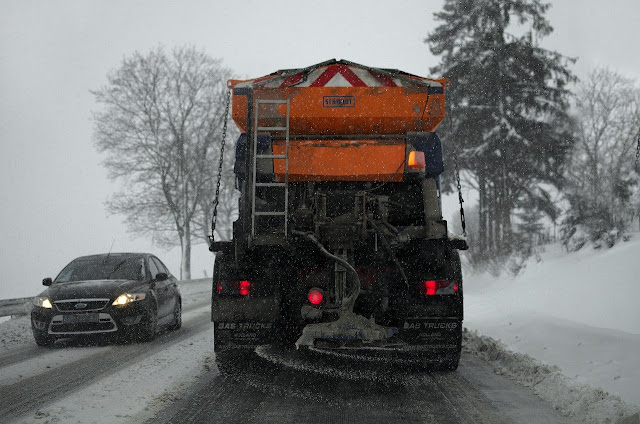We are used to seeing trucks dumping salt on the road during periods of extreme cold that we almost forget to wonder why.
Salt helps fight snow and ice, and so, to secure the roads. But how is this done?
When the temperature drops below 0° C, water in liquid form turns into a solid-state (ice). Same we observe when we put water in a freezer. The fundamental difference between liquid water and solid water (ice) is how individual water molecules organize themselves.
In liquid water, molecules (made up of two hydrogen atoms and one oxygen atom - H2O) are free to move relative to each other.
When the temperature drops below 0 °, these movements slow down until they stop. The water molecules then bind together in a sufficiently durable manner, symmetrically, freezing in the form of ice, solid water.
If the cooling process is slow, magnificent ice crystals are created, as the bonds between individual molecules have time to form very symmetrically on a large scale.
Now let's analyze the kitchen salt (sodium chloride). When trucks put salt on icy roads, the salt molecules break down into their sodium and chloride ions, just like when you put kitchen salt in a glass of water. Due to their proximity, these ions locally disturb the arrangement of water molecules.
The process then propagates deep into the rest of the ice, and slowly, solid water turns into liquid and salty water.
You might think that when the ice melts with the help of salt, the temperature rises above 0°, but actually, the contrary happens.
If pure, water freezes at 0°C, and changes from liquid to a solid-state. If water is impure, its melting point drops below 0°C. Depending on the nature of the impurities and their quantity, the melting point is different. The salt spread on the roads is capable of lowering the melting temperature of the water, depending on the amount that is added. The more salt is added, the more the melting point drops below zero.
But when temperatures drop very low, table salt is no longer effective enough to melt ice. Other salts can be used, but they are more aggressive for the environment.
To melt ice on the roads, cooking salt can be replaced by another type of salt (eg. calcium chloride or magnesium chloride); where the same dissolution process is observed. But the result is a little different since one molecule of calcium chloride or magnesium chloride produces two chloride ions for one calcium or magnesium ion. In this case, the presence of a greater number of ions makes it possible to accelerate the melting of the ice.











Social Plugin